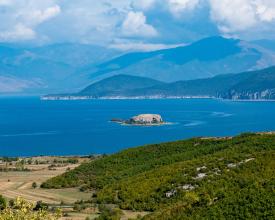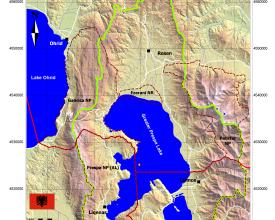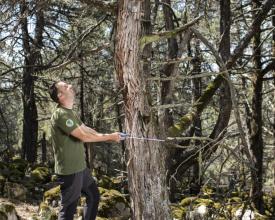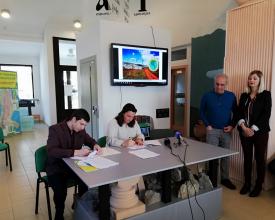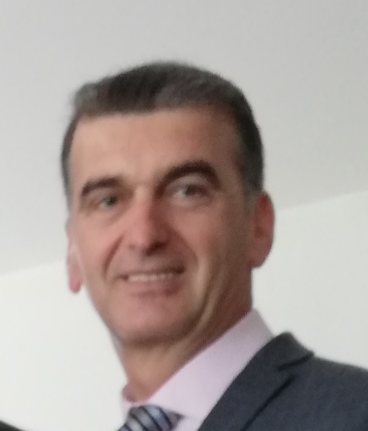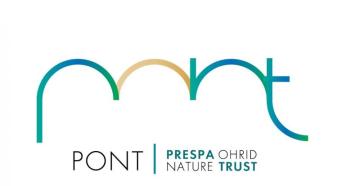
Cerrar la brecha entre la planificación estratégica y operativa de las áreas protegidas
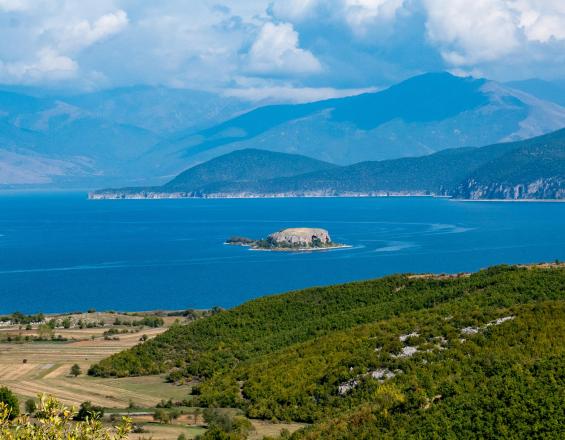
La perspectiva de obtener una cofinanciación a largo plazo del Prespa Ohrid Nature Trust (PONT) ha impulsado a las autoridades gestoras de las áreas protegidas de la Gran Área de Prespa, en Albania y Macedonia del Norte, a revisar la planificación y ejecución de sus operaciones básicas. Ahora utilizan regularmente la Herramienta de Seguimiento de la Eficacia de la Gestión (METT) como herramienta de apoyo a la toma de decisiones para lograr una gestión más transparente, basada en pruebas y adaptativa, vinculada al ciclo anual de gestión. Las conclusiones y resultados de la evaluación METT informan el desarrollo de los planes operativos utilizando una plantilla desarrollada por PONT. La cofinanciación del PONT permite a los gestores de las AP contratar nuevo personal y desplegar los recursos adecuados para mantener a largo plazo las funciones básicas de gestión, como el seguimiento de la biodiversidad, la educación ambiental o la gestión de visitantes, que a menudo se descuidaban en el pasado o dependían de proyectos u otras formas de apoyo externo intermitente.
Contexto
Défis à relever
Aunque los Planes de Gestión se han ido integrando gradualmente en los ciclos de gestión a largo plazo de las AP de la AMP, sigue existiendo un gran desfase con respecto a la planificación anual u operativa. Este desfase se debe a una serie de razones, entre las que se incluyen unos Planes de Gestión poco realistas y no operativos, la falta de conocimientos y aptitudes, unos procedimientos de trabajo inadecuados, la ausencia de sistemas de apoyo a la toma de decisiones o la ineficacia de los mismos, así como la inseguridad de la financiación. La fuerte dependencia en las dos últimas décadas de la financiación de proyectos internacionales a corto plazo y de consultores externos ha perpetuado a menudo estas deficiencias. La gestión ad hoc e incoherente resultante dificulta la aplicación efectiva de los planes de gestión.
Ubicación
Procesar
Resumen del proceso
Los componentes básicos están relacionados con tres de los seis elementos del marco PAME. Cada ciclo de gestión, ya sea de 1, 5 o 10 años, comienza con la comprensión del contexto del área protegida. El METT (1) se utiliza para organizar y evaluar la información del año anterior relativa a la situación y las amenazas para la biodiversidad, las partes interesadas y las comunidades, y sus conclusiones y resultados ayudan a determinar las preferencias entre opciones a la hora de preparar el plan operativo del año siguiente. El plan operativo y las plantillas presupuestarias (2) utilizadas para presentar las solicitudes de subvención a PONT permiten a los gestores de las AP integrar tanto las actividades recurrentes (rutinarias) como las no recurrentes (proyectos) que son realizables con el personal y los recursos técnicos y financieros existentes, incluida la cofinanciación de PONT. Gracias a que el PONT garantiza la financiación de las operaciones básicas (3) hasta el 50% del presupuesto anual total para 2030, y posiblemente más allá, los gestores de las AP pueden perseguir sistemáticamente la consecución de los objetivos de gestión establecidos en el Plan de Gestión sin depender significativamente de proyectos intermitentes a corto plazo de los donantes, lo que crea un sentimiento de apropiación hacia los planes operativos.
Bloques de construcción
Evaluaciones METT periódicas
Las evaluaciones periódicas de la Herramienta de Seguimiento de la Eficacia de la Gestión (METT) se están convirtiendo en parte integrante del ciclo anual de gestión en las organizaciones que gestionan las Áreas Protegidas de la AMP. La METT se está estableciendo como una importante herramienta de apoyo a la toma de decisiones que permite una gestión más transparente, basada en pruebas y adaptativa, vinculada al ciclo anual de gestión. Ayuda a los gestores a organizar y racionalizar los ciclos anuales de presentación de informes, mientras que sus conclusiones y resultados contribuyen a determinar las preferencias entre opciones a la hora de preparar el plan operativo para el siguiente ciclo anual.
Las evaluaciones METT forman parte integral del sistema de seguimiento y evaluación del PONT, tanto a nivel de programa como de subvenciones individuales. Los beneficiarios de subvenciones que gestionan áreas protegidas deben utilizar la METT para evaluar el impacto de las subvenciones del PONT en la eficacia de la gestión y hacer un seguimiento de los avances a lo largo del tiempo.
Factores facilitadores
La mayoría de los beneficiarios de las subvenciones pudieron aprovechar su experiencia previa en la realización de evaluaciones METT durante la última década, necesarias para proyectos apoyados por donantes internacionales. La Agencia Nacional de Áreas Protegidas de Albania ha hecho obligatorias las evaluaciones METT anuales, mientras que en Macedonia del Norte se utilizan regularmente en el proceso de elaboración de planes de gestión para las AP.
Lección aprendida
Los gestores de las AP dejan de ver el valor añadido de realizar la evaluación METT después de unas pocas iteraciones, cuando los cambios en la eficacia de la gestión son demasiado sutiles para ser evaluados o reconocidos por el sistema de puntuación METT. Un enfoque participativo en combinación con una evaluación más profunda y meticulosa basada en pruebas, así como un amplio uso de las columnas "Comentario/Explicación" y "Próximos pasos" en el formulario de evaluación, mejoraron la objetividad y los beneficios percibidos de las evaluaciones METT. El enfoque participativo también permitió a los gestores de AP interactuar y debatir las cuestiones tratadas en la METT con las principales partes interesadas, mientras que el uso de facilitadores en el proceso hizo que esta interacción fuera más eficaz y productiva. La METT avanzada se está poniendo a prueba para ayudar a aumentar la objetividad de la evaluación y hacer un seguimiento más coherente de los cambios en la eficacia cada año.
Tomarse en serio la planificación operativa
Las autoridades de gestión de las AP de la WPA utilizan una plantilla desarrollada por PONT en Microsoft Excel para preparar los planes operativos anuales y el presupuesto que forman parte de sus solicitudes de subvención a PONT. Estos planes operativos establecen las acciones que se llevarán a cabo cada año para alcanzar los objetivos fijados en el plan de gestión del AP en cuestión. Aunque la mayoría de las acciones se seleccionan de entre las identificadas en los planes de gestión, las acciones adicionales surgen de las evaluaciones (anuales) del METT, aprendiendo de la experiencia o en respuesta a la incertidumbre y el cambio. Los planes operativos integran tanto las actividades recurrentes (rutinarias) como las no recurrentes (proyectos) para garantizar que los recursos se distribuyen adecuadamente entre las distintas áreas funcionales. Los planes operativos sólo incluyen actividades que pueden realizarse actualmente con el personal y los recursos técnicos y financieros existentes, incluida la cofinanciación de PONT.
Utilizando plantillas predefinidas desarrolladas por las autoridades nacionales de áreas protegidas tanto en Albania como en Macedonia del Norte, las AP de la AMP preparan planes anuales (operativos) que están sujetos a la aprobación formal de las autoridades nacionales.
Factores facilitadores
Aparte del presupuesto, que es más detallado, la plantilla elaborada por el PONT tiene un contenido similar a las utilizadas en la legislación nacional. Los planes operativos y el presupuesto se preparan al final de cada año natural para el siguiente y constituyen el elemento clave de las solicitudes de subvención presentadas al PONT; el proceso de solicitud de subvenciones del PONT se ajusta a los ciclos de planificación e información del sistema nacional para evitar la duplicación de tareas.
Lección aprendida
Aunque los planes operativos llevan utilizándose aproximadamente una década en Macedonia del Norte y varios años en Albania, la gestión y el trabajo sobre el terreno siguen siendo en gran medida ad hoc e incoherentes. La plantilla PONT y las aportaciones de las evaluaciones METT periódicas permiten a los gestores de las AP elaborar planes operativos y presupuestos anuales más realistas. La Plantilla PONT insta a los gestores a planificar con más detalle el despliegue de recursos humanos, financieros y técnicos relacionados con las áreas funcionales básicas, como el seguimiento de la biodiversidad, las patrullas, la restauración de hábitats, la educación ambiental o la gestión de visitantes, que a menudo se descuidaban en el pasado. Esta tarea resultó ser todo un reto debido a la falta de procedimientos y sistemas adecuados, en particular para las funciones y actividades en las que no existe experiencia previa.
Financiación básica garantizada
La mejora de la planificación operativa permite a los gestores de las AP definir claramente sus carencias de capacidad y sus necesidades de recursos más críticas para una ejecución eficaz de las actividades. La cofinanciación a largo plazo de PONT permite a los gestores de las AP de WPA contratar nuevo personal y desplegar recursos para mantener sus funciones básicas de gestión. Utilizando la plantilla presupuestaria desarrollada por PONT, los gestores de AP elaboran un presupuesto detallado para cada acción que se desglosa en 5 categorías de costes: costes de personal; consultores; equipamiento e infraestructura; costes de viajes, reuniones y formación; y consumibles, gastos de funcionamiento y otros gastos. La cofinanciación de PONT asciende al 50% del presupuesto anual total y se utiliza para cubrir los costes recurrentes y no recurrentes relacionados con las operaciones básicas de gestión, excepto para la adquisición de equipos y la construcción de nuevas infraestructuras que superen los 20.000 euros.
Factores facilitadores
La plantilla presupuestaria de PONT ayuda a los gestores de AP a combinar eficazmente la cofinanciación de PONT con la financiación del gobierno o los ingresos que generan, así como los proyectos ejecutados por ONG conservacionistas o donantes y organismos internacionales.
Lección aprendida
La falta de datos detallados sobre los costes de gestión de las AP dificulta una planificación y gestión eficaces de la conservación. Las AP de la AMP carecen de sistemas que conecten los datos financieros con las acciones de conservación sobre el terreno. La información financiera suele gestionarse con el fin de cumplir los requisitos nacionales de presentación de informes financieros, que son de carácter general, y no de gestión. El presupuesto anual que utiliza la plantilla del PONT se organiza de forma que permita la agregación de costes y el análisis por resultados que, a su vez, se vinculan a los objetivos de gestión. Esto también informa la planificación operativa en el siguiente ciclo de gestión y ayuda a identificar oportunidades para mejorar la productividad y la eficacia. Los futuros avances en la planificación operativa dependerán de la capacidad de mejorar las estimaciones de los costes necesarios de las distintas áreas funcionales de trabajo y también de los niveles de rendimiento de la gestión.
Impactos
Al disponer de una asignación presupuestaria total predeterminada pero asegurada para el año, y a largo plazo, los gestores de las AP de la AMP pueden desarrollar y mantener las áreas funcionales y los programas clave, basándose en el Plan de Gestión y aumentando así la Eficacia de la Gestión. Este es el caso, en particular, del seguimiento de la biodiversidad, la gestión de los visitantes y los programas de educación ambiental, que todavía son inexistentes o están poco desarrollados debido a la gran dependencia del apoyo a corto plazo y a menudo interrumpido de los donantes internacionales que proporcionaron inversiones iniciales y asistencia técnica, pero no financiación para mantener las operaciones a largo plazo. Con la cofinanciación a largo plazo del PONT, los gestores de las AP pueden contratar y retener a nuevo personal y reciclar gradualmente al existente para desarrollar los programas clave y aumentar su capacidad de movilizar y aplicar financiación adicional de fuentes externas para actividades no recurrentes que tienen un calendario de ejecución más flexible. Varios guardabosques, biólogos y expertos en comunicación y educación se han incorporado a las autoridades de las AP de la AMP en los dos últimos años, ocupando puestos vacantes desde hace tiempo y de importancia crítica para su funcionamiento básico.
Beneficiarios
Autoridades gestoras de los Parques Nacionales de Galicica y Pelister, del Monumento Natural del Lago Prespa y del Parque Natural de Ezerani, en Macedonia del Norte, y del Parque Nacional de Prespa, en Albania.
Objetivos de Desarrollo Sostenible
Historia
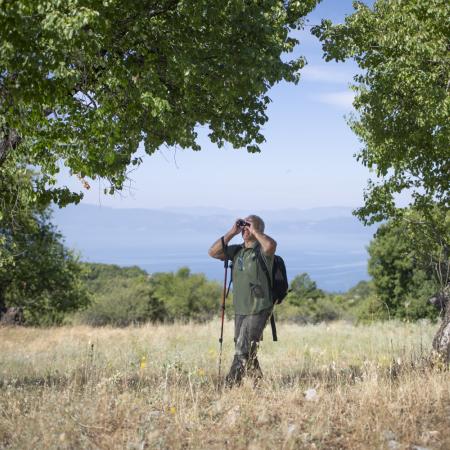
A lo largo de las dos últimas décadas, los donantes internacionales han desempeñado un papel clave en el establecimiento de nuevas áreas protegidas y autoridades de gestión en la APM, como el PN de Prespa en Albania o la creación del organismo de gestión del PN del lago Prespa y el PN de Ezerani en Macedonia del Norte, o en facilitar una transición de las operaciones dominadas por la producción de madera y leña al desarrollo de competencias para las funciones clave del trabajo en áreas protegidas modernas en los PN de Galicica y Pelister en Macedonia del Norte. Su apoyo fue esencial para elaborar los primeros planes de gestión de estas áreas protegidas, empezando por el PN Pelister en 2006, construir la infraestructura básica para los visitantes, como rutas de senderismo y ciclismo y centros de visitantes, y adquirir el equipo básico necesario para el seguimiento de la diversidad biológica y las operaciones cotidianas de gestión. Los avances iniciales logrados con importantes aportaciones de expertos y proveedores de servicios externos no pudieron ser mantenidos por el personal existente, cuyas habilidades y competencias sólo pudieron desarrollarse de forma gradual y limitada. Dado que las operaciones clave carecían de financiación suficiente por parte de los gobiernos o dependían de los beneficios generados por la extracción de biomasa, los planes operativos no pudieron poner en práctica las acciones y medidas prescritas por el Plan de Gestión. La gran dependencia de proyectos intermitentes y a corto plazo de los donantes internacionales, a menudo ejecutados por agencias externas o con una importante participación de expertos externos, ha dado lugar a una gestión oportunista en lugar de planificada.
Con el compromiso de PONT de cofinanciar a largo plazo los costes recurrentes de gestión, para 2030 y más allá, los gestores de las AP podrán contar con recursos humanos y financieros adecuados durante un largo periodo de tiempo y asignarlos de forma realista entre una serie de posibles actividades para desarrollar y mantener las áreas funcionales y los programas clave de su área protegida. Con el tiempo, podrán adquirir experiencia y recopilar datos que les ayuden a mejorar sus estimaciones de los costes de las nuevas áreas funcionales de trabajo, así como a mejorar la planificación operativa y, en última instancia, alcanzar mayores niveles de rendimiento y eficacia de la gestión. Los primeros resultados de la mejora de la planificación operativa son evidentes en el Plan Operativo 2020 del PN Galicica, que se centra en gran medida en la gestión de los visitantes y la educación ambiental y excluye las actividades de producción de leña, por primera vez, sentando un precedente para los parques nacionales del norte de Macedonia.

